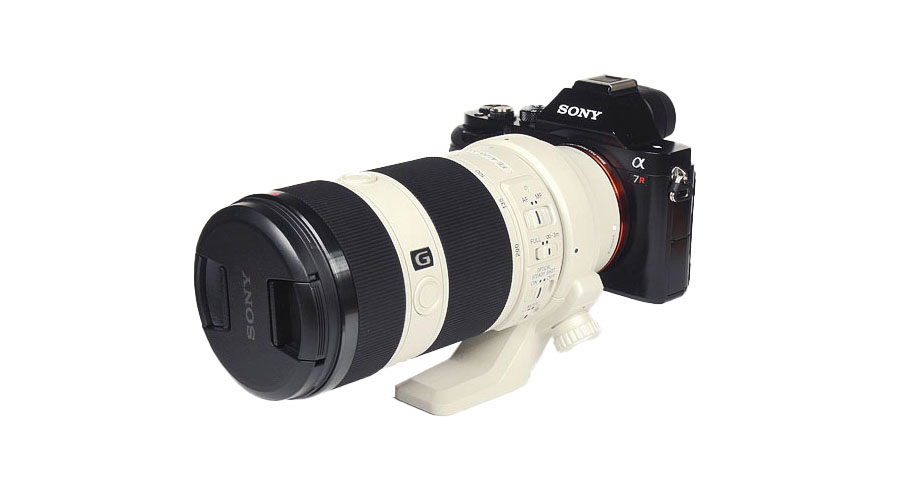
So far Sony didn’t really bother to offer high quality tele lenses for the E-mount but with the introduction of the full format camera lineup, Sony seems to have changed direction towards the higher end of the market. Following the initial full-format Zeiss offerings, the new Sony FE 70-200mm f/4 G OSS is the first professional grade E-mount tele lens. Along with the new priorities, the pricing has also been lifted to new heights. At around 1500US$/EUR it is not a cheap lens for sure but, to be fair, this is in line with e.g. the Canon and Nikon (DSLR-based) counterparts. In this comparison is also apparent that there’s no mirrorless bonus with respect to size and weight. Tele lenses require a certain length and diameter so the shorter lens-to-sensor distance doesn’t make a difference anymore. The FE 70-200mm f/4 G OSS is a full-format lens and as such compatible to both the A7 series as well as the APS-C format mirrorless cameras (formerly NEX, now Alpha APS-C E-mount). In the scope of this review we’ll focus on the performance on full-format only.
The build quality of the Sony lens is outstanding – there’s no wobbling whatsoever and the control rings operate very smoothly. It does not extend during zooming and thanks to its inner focusing system the front element does not rotate so using a polarizer is no problem – unless you attach the deep (white colored-) hood, of course. Sony provides a detachable tripod mount as part of the standard package. Looking over to Nikon & Canon, this is rather unusual but surely a welcome addition for those preferring to shoot on tripods every once in a while. The lens is also dust and moisture-resistant.
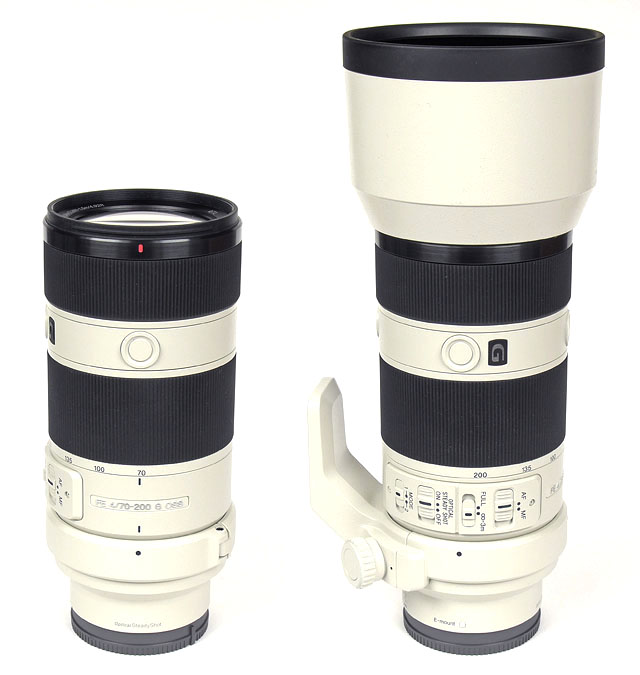
On DSLRs you may use such a lens for sports but this is out-of-question at least when combined with the Sony A7R which is not exactly renowned for its AF speed, let alone AF tracking. This is not a lens issue but primarily a limitation of the camera though. On the positive side, AF operations are also essentially noiseless. Manual focusing works “by-wire”. We don’t really have an issue with this approach but more traditional photographers may feel a bit “detached” from the focus action here.
The lens incorporates a image stabilizer (“Optical Steady-Shot” or OSS). Whatever Sony claims it to be – it doesn’t work overly well on the A7R due to the shutter vibration issue of this camera. The number of sub-standard outliers were shockingly high during our field trips and that’s especially at rather conventional shutter speeds. A7R users should try to stay faster than 1/500sec when using this or any other tele lens in this range. That being said, the situation should be much better on the A7 or A7s. Their electronic shutter option should do the trick (which is why we would clearly recommend the A7 or A7s over the A7R).
| Specifications | |
|---|---|
| Optical construction | 21 elements in 14 groups inc. 3x aspherical, 1xSUD, 2xED elements |
| Number of aperture blades | 9 (circular) |
| min. focus distance | 1.0m (1:7.7) |
| Dimensions | 80x175mm |
| Weight | 840g |
| Filter size | 72mm |
| Hood | supplied, petal-shaped, bayonet mount |
| Other features | Weather Sealing, Optical Image Stabilizer, Focus hold button |
Distortion
The Sony lens has a decent distortion characteristic. At 70mm it shows a medium amount of barrel distortion (1.1%) changing to medium pincushion distortions in the mid-range to long end. This is similar to its DSLR counterparts. Unsurprisingly, this can be also fully compensated when activating digital auto-correction.
If you move your mouse cursor over the image you can switch to the corresponding auto-corrected results (there may be a short delay).
Corrected:
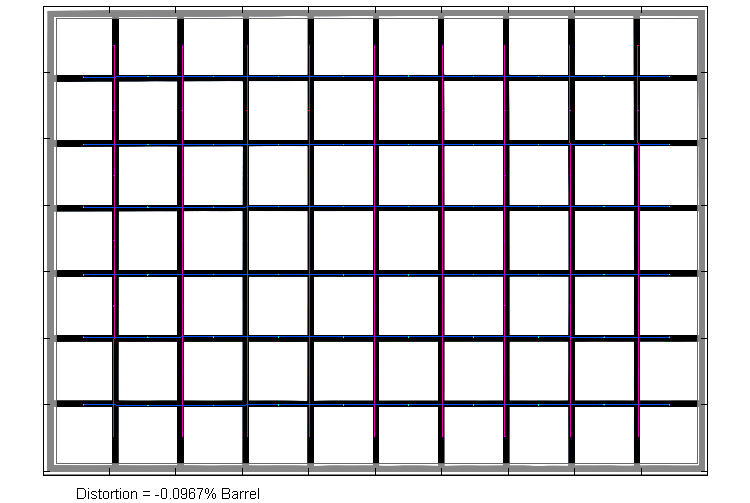
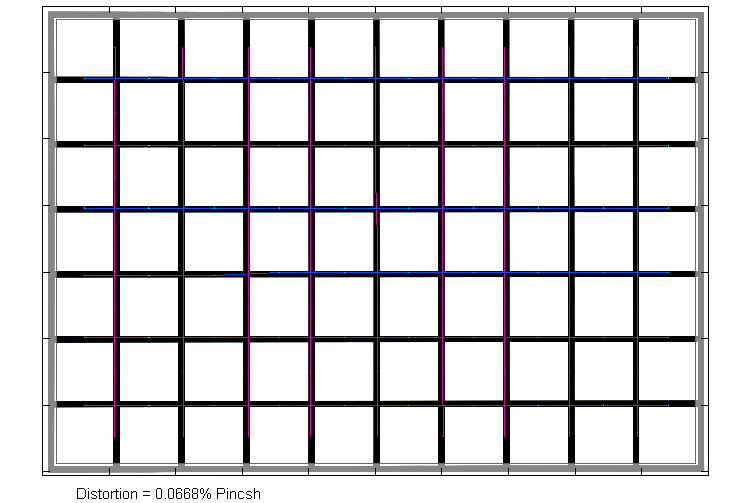

RAW:


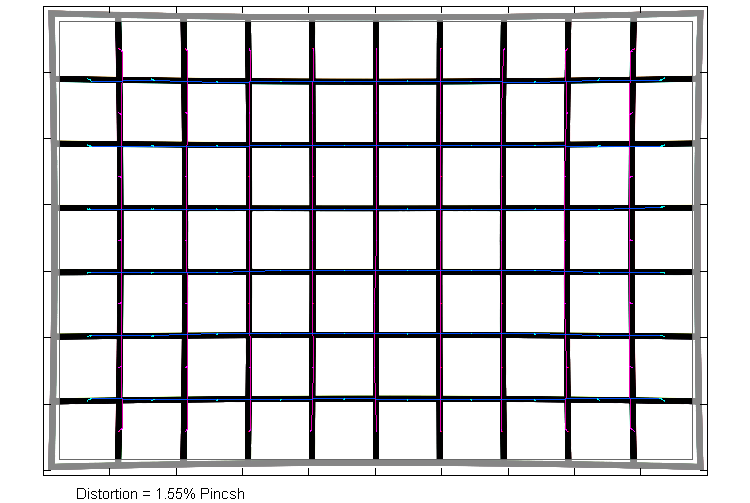
Vignetting
At fully open aperture, the falloff varies between 1.1EV (wide-end) and 1.5EV (long end). Such a light falloff is usually visible but within the full format scope, it is also rather typical. Stopping down to f/5.6 resolves most of the issue and it’s irrelevant from f/8 onward.

With activated vignetting correction the light falloff decreases significantly, of course. It is basically negligible across all settings except at fully open aperture at and beyond 135mm where you may see traces of vignetting in certain scenes.

MTF (resolution at 36 megapixels)
The resolution characteristic is mostly impressive. The center resolution is best at 70mm – it is excellent straight from f/4 and all the way up to f/11. The borders are generally very good whereas the corners are slightly weaker at f/4 but catch up from f/5.6 onward. The sweat spot of the lens is in the middle range. The center is marginally softer but the quality in the outer image region is much better. The lens is even capable of delivering excellent results across the image field at f/8 which is really rare especially for a zoom lens. There’s a slight performance penalty at 200mm. The center is still very good to excellent followed by good to very good borders. However, the corners are soft at max. aperture. Stopping down to f/5.6 boosts the corners to towards the quality of the borders again. The field curvature is generally low.
The centering quality of the tested sample was mediocre.
Please note that the MTF results are not directly comparable across the different systems!
Below is a simplified summary of the formal findings. The chart shows line widths per picture height (LW/PH) which can be taken as a measure of sharpness. If you want to know more about the MTF50 figures you may check out the corresponding Imatest Explanations.

Chromatic Aberrations (CAs)
Lateral CAs can be auto-corrected either by the camera or via Sony’s RAW converter. This is a lossless operation so it’s a good idea to take advantage of it. However, the Sony lens is also very well corrected with an average CA pixel width of 1px or less at the image borders.

Bokeh
The Sony 70-200mm f/4 G OSS is comparatively slow for a professional tele-zoom lens. Nonetheless it is easily possible to achieve a shallow depth-of-field so the quality of the bokeh (out-of-focus blur) is an important criteria. The Sony lens does a good job here. Out-of-focus highlights are fairly evenly rendered although you may spot a slight nervousness in the inner highlight zone. The circular disc shape remains intact till f/5.6. At 8 you can spot marginal traces of the more edgy aperture shape.

The rendition in the critical focus transition zone is very silky in the foreground. The background is also good but slightly less perfect.

The Sony FE 70-200mm f/4 G OSS is, undoubtedly, a high quality with just a few weaknesses. The resolution is generally on a very high level except at 200mm @ f/4 where the corners are too soft. Lateral CAs are well corrected and help to keep a high sharpness perception. The slight distortions are about average for a lens in this class. There's some visible light falloff at f/4 but the issue is mostly gone from f/5.6 onward. Many users will probably prefer to activate the auto-correction feature in the camera or RAW converter so the minor flaws in the secondary characteristics are taken care of anyway. This isn't applicable for the bokeh though but it is of pretty good quality in terms of highlight and blur rendition anyway. Bokeh fringing isn't relevant on a lens with a max. aperture of f/4.
The Sony lens is not only a looker but the mechanical quality is also truly impressive. It feels exceptionally solid and the control rings feel silky smooth. The weather sealing as well as the supplied tripod mount are also a nice bonus. Unfortunately it is a bit hard to comment on the AF potential. The A7R used for testing is slow in this respect but that's a camera issue. However, it's realistic to state that the system performance will remain inferior to DSLRs in the foreseeable future.
However, as already mentioned in the introduction you shouldn't really pair this lens with the Sony A7R anyway. The A7R creates rather massive shutter vibrations that are a game spoilers when using tele-lenses - even with activated OSS. However, the A7 and A7s should be able to exploit the really high potential of the Sony FE 70-200mm f/4 G OSS. Therefore highly recommended.
-
Optical Quality
-
Build Quality
-
Price / Performance

